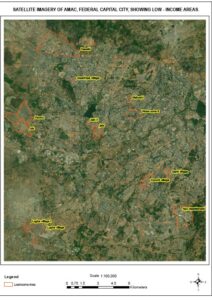The term settlement geography refers to a place that offers its people a life, dynamically and physically through several activities like trading, agriculture, and entertainment. It is often said, ‘the environment is the chief maker of man’. Hence, one distinctive feature settlements provide the human species with, is interaction with the likes of themselves alongside with nature and its forces.
A branch that investigates human resources on earth’s surface in settlements is called settlement geography. It includes all forms of human communities varying from towns to urban civilisations with all its aspects like social, organisational, materials, cultural, and spiritual elements that brace its existence; in simple words, it helps one understand the relation of mankind with its surrounding environment. Due to the general perspective that settlements are core elements of a cultural landscape that develop with time, Settlement Geography as a study branched out from cultural geography and further subdivided into urban and rural settlements.

Difference Between Urban and Rural Settlement
Urban settlements are marked by a settlement that already engages itself in secondary and tertiary activities. On the contrary, rural settlements focus on primary activities such as agriculture and mining. Sometimes the functions, population density, and sizes correlate. Traditionally, the two sub-branches were defined separately and held the importance of their own. However, with the rise of industrialisation and counter- or peri-urbanisation, the already existing line between the dichotomy is blurring, hence giving more emphasis and importance to integrative geography, which considers the two in the continuum.
The need for diversification of the term settlement geography was majorly highlighted when a broader aspect of society started spreading its hands across the terrestrial surface to occupy more land for their agricultural, industrial, housing, and productive needs. Different human activities need different types of land, terrain, soil, and climate. A predominantly rural or farming-orientated section of society generally requires land for farming, mining, livestock holding, breeding, lumbering, etc. Whereas the other section of society is extensively involved in activities like a procession, producing, banking, construction, development, transportation, etc. While the overall natural location of the place matters, external factors like water, weather, climate, shelter, soil, defence, etc. play a major role in deciding whether a place will, in fact, be a rural settlement or an urban one.
Issues Going Forward With Settlement
One of the main issues faced with the settlement of our future generations and resources is the sole fact that human needs are infinite, while the resources or land structure that is given to us by nature is limited. Problems like bad crops, irregular water supply, poor housing, delayed transport, pollution, erosion, instability, etc. are constantly on the increase. This is why distinguishing which part of the land is suitable for which kind of settlement is absolutely necessary. Land developers in the Global North have found the need to build buildings with altitudes due to inadequate access to land to reside people. Also, we would not be exercising crop rotation if the land had enough or ample nutrients to subside the entire yield. Tough times require tough decisions, and careful utilisation of land as a resource is what is needed.
However, in Africa, especially Nigeria, land developments have continued to sprawl due to individual land ownership, tenure pluralism, poor environmental judgement, a lack of vision for growth and improvement, and, of course, a lack of political will. Rather than practice improved agricultural practices, there have been poor management, including cattle herders and farmers crises. The settlement pattern of many cities in Nigeria is distorted. There is a need to understand patterns and reasons for settlement when making informed decisions about settlement growth. It is not about skyscrapers, elegant designs, or traditional designs but the people who live in those settlements, their need for growth, sense of place, and commitment to the settlements.
We are who we are because of the places we are and live in.
